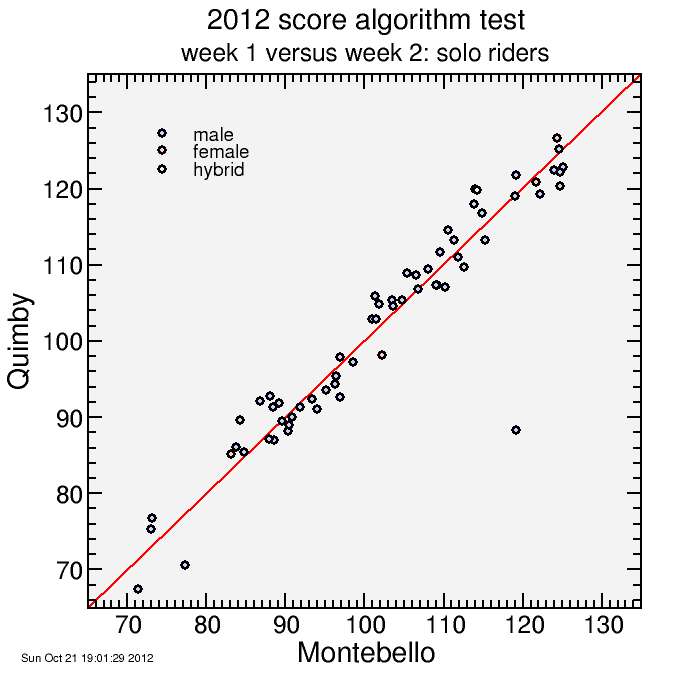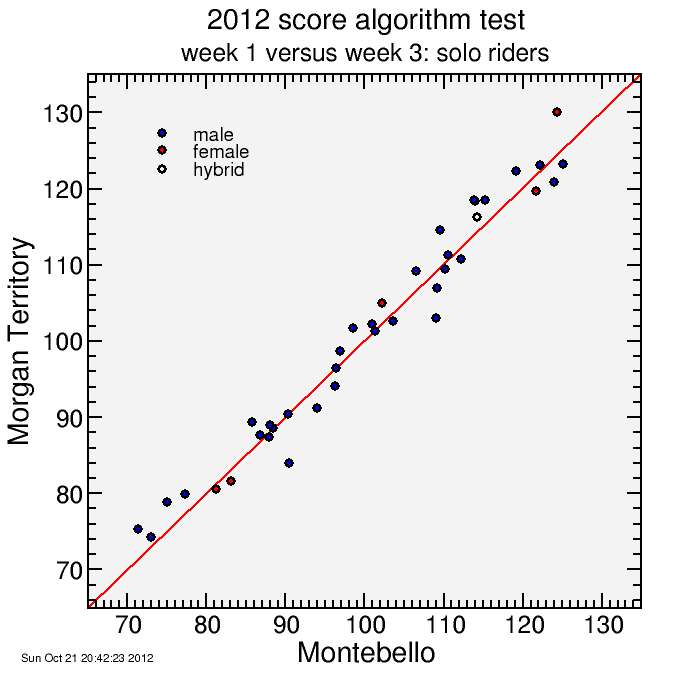Low-Key Hillclimbs: test of 2012 scoring code
The Low-Key Hillclimbs are now three weeks into their 2012 eight-week schedule and it's a good time to check on how the new scoring code is working.
In previous years I scored riders based on the ratio of the median rider time to their time, multiplying by 100. Women were given a boost to their scores to balance historical men's and women's scores.
But there were two scenarios which caused problems with this. One was rider turn-out. Montebello, the first climb in the series, historically attracts a broader range of riders than following weeks. Perhaps riders scoring lower in the first week become discouraged, or they ride less and prefer the convenience and more favorable date of Montebello (less off-season), I'm not sure. It would be interesting to research this. But for whatever reason, for riders doing Montebello in addition to other weeks, there's a good chance Montebello was their best score of the year. On the other hand, especially steep and challenging climbs tend to attract stronger riders, pushing the strength of the rider(s) generating the median score higher, lowering everyone's score. The other issue was that steep climbs tend to fractionally spread riders out more: less draft benefit, plus riding on flatter roads, even slower, yields less fractional speed difference for the same fractional power difference.
To compensate for these, I put in a new system, where I calculated a "reference time" and a "slope factor" for each week, self-consistently with other weeks, such that scores should have a fairly equivalent spread for any pair of weeks, considering solo riders who did both, not counting those who had an identified mechanical problem.
So I can check if that's worked so far by plotting scores of riders for week 1 versus week 2 and week 3. What I want to see is basically a straight line of slope 1, with intercept 0: y = x. Riders should scatter about that line, some doing relatively better one week, others relatively better the other. But the goal is to eliminate the motivation for one type of climb to have more effect on net results than another. At Low-Key, we view all climbs as having equal merit: short and long, shallow and steep. They all hurt, just in different ways.
So here are the plots. I think it's safe to say things are working well.


The one curious aspect is that glaring outlier in week 1. At first I thought it was a mechanical problem, but reports are that Holger was just having a very bad day on Quimby. I know how it goes: that happened to me at Mt Hamilton in 1996.

Comments